- Administrator
- Albums and Singles
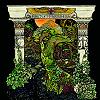 Scott "Wino" Weinrich (no relation to the band also being reviewed this week by Creaig Dunton) has been in many groups over the years. Saint Vitus, The Obsessed, Spirit Caravan and The Hidden Hand. After a couple of decades moving from one classic doom band to another, this is first time releasing an album under his own name. The formation of a new band for these sessions has worked to his benefit as this is a return to form after a few years in a songwriting wilderness.
Scott "Wino" Weinrich (no relation to the band also being reviewed this week by Creaig Dunton) has been in many groups over the years. Saint Vitus, The Obsessed, Spirit Caravan and The Hidden Hand. After a couple of decades moving from one classic doom band to another, this is first time releasing an album under his own name. The formation of a new band for these sessions has worked to his benefit as this is a return to form after a few years in a songwriting wilderness.
One thing that holds true for Wino after all these years is that he does not surprise his listeners. Every album by Wino’s various bands sounds roughly the same; his style has changed little since his time in Saint Vitus. Yet despite this tendency towards a standard, the quality of the music still varies wildly from release to release. For example, Wino’s last band, The Hidden Hand, started out strong and ended up fairly flaccid by the end without really evolving musically. With Punctuated Equilibrium, the musical template still has not changed (this could have been recorded 20 years ago) but the passion has returned. The riffs here are huge, the solos are like lasers and Wino’s vocals sound more energetic than they have in years.
There is a good mixture of straightforward songs like the title track (I never thought evolutionary theory would make a good song but Wino makes it work) and pieces where the band just grooves and lets Wino loose on the guitar. “Wild Blue Yonder” features some fantastic wah-wah solos from Wino’s magic fingers. “Secret Realm Devotion” combines the best of Wino’s songwriting and guitar playing (although the chorus is a bit wobbly); there is some seriously killer riffage and soloing going on here.
It's great to see Wino back firing on all cylinders; Punctuated Equilibrium is one of the best things he has put his name to in a long time (which explains why his name is now so prominently displayed). All the classic Wino ingredients are here but the music never sounds as antiquated or as worn-out as The Hidden Hand did towards the end. This is a no-nonsense, no-frills beast of a metal album, just Wino doing as he does best and it is great to hear him sounding like he is having fun again.
samples:
Read More
- John Kealy
- Albums and Singles
Waldron’s contribution has been “extracted and distilled” from his classic Perekluchenie album. This collage style of music can be difficult to do effectively within the constraints of a 7” (especially when there is only one side available to the artists) but “Dented Switchery (Wretched Density Mix)” works well in this format. The paranoid sounding stringed instrument morphing into a rasping drone, like a rusty gate that needs oiling, “Dented Switchery” is one of Walrdon’s more unnerving pieces.
Boyd’s “Compare Me to a Shadow” is definitely the star of this pair of tracks. At first, I thought my record player was broken (well, more broken than it already is) but the scratchy rhythm blossomed into a dusty beauty. The piece begins quietly, static-like pulses and what sounds like a recording of distant traffic. Towards the end, strange glissandos stream through the piece like shuttles from another dimension.
There is also an art edition limited to 100 copies available which features signed and numbered prints from Waldron and Boyd. Waldron has included a drawing of one of his mysterious and unsettling chimeric beasts whereas Boyd contributes a stark and baffling image of an egg in a cage. I feel these prints are worth the extra money but, in these cash-strapped times, I do not feel that they substantially add to the listening experience. That being said, the listening experience is wonderful and the 7” is more than enough value for money on its own.
Read More
- John Kealy
- Albums and Singles
The rough-edged rendition of the American national anthem was a staple of their recent live shows, a bizarre interlude amidst the usual heavy as lead songs. It worked on stage but played on its own it falls flat on its face. The flip side to this single is a cover of my favourite Kiss song, “Detroit Rock City.” The influence of Kiss on the Melvins is legendary; they have covered Stanley et al. numerous times previously and one only has to look at the three solo EPs put out by the Melvins to see that these guys are obsessed. Despite all this, “Detroit Rock City” is a pedestrian attempt at the song. The guitar solos are too clinical, neither Buzz Osbourne nor guest guitarist Adam Jones (of Tool) sound like they are giving it their all.
This is a mediocre release from a group who are capable of much better. This single is purely of novelty value only; yet novelty value is highly prized amongst Melvins fans so no doubt this single will sell out for that reason alone. However, I will not be spinning this often.
Read More
- Administrator
- Albums and Singles
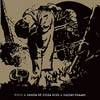 Temporary Residence has once again been the bastion of preserving little known music with this double disc compilation. Much like the disc by The Loved last year, this 2+ hour collection compiles every single track Wino recorded or released during their brief career. Although the band was responsible for a number of really good heavy scum rock recordings, I'm still wondering was reissuing all of them necessary.
Temporary Residence has once again been the bastion of preserving little known music with this double disc compilation. Much like the disc by The Loved last year, this 2+ hour collection compiles every single track Wino recorded or released during their brief career. Although the band was responsible for a number of really good heavy scum rock recordings, I'm still wondering was reissuing all of them necessary.
On the whole, Wino could easily be lumped in with the post-Nirvana noise rock contingent that was represented by most of the Amphetamine Reptile label in the early to mid 1990s. The music is loud, crass, angry, and sloppy, all of which are very positive qualities. In addition, most of the pieces do have that certain guitar sound that many of the records of this era had, for better or worse. It’s not my favorite sound, but there is a certain nostalgia factor attached to it.
Many of the tracks, most notably "Red Wings" and "My House," feature that stop/start rhythm between screamed vocals and noisy guitar, co-opted from Big Black by way of Helmet. The similarly structured, but slower pace and more violent sound of "Heaven" resembles what Godflesh could have sounded like if they had gone more grunge rather than electronic/industrial in their career. "Glass Blower" also has a clearer reference point: the guitar tone is in league with Dinosaur Jr., but with heavily delayed and screamed vocals throughout.
The songs that step outside of this model are the ones that shine through. "Dutch Oven" and "Winner Takes Nothing" both clock in as sub-two minute rapid fire near hardcore punk blasts. The instrumental "Attack Utopia" has a slightly twisted surf guitar line and a slower, sludgy middle section. "Eon" is cheap keyboards, electronic drums and chimes with silly spoken word. The most bizarre is "Desperation," a track opening with chimes and bells, a bit of sax, and eventually becomes a mutant hybrid between metal and jazz, a fusion that Kevin Martin pioneered in God, though here more stripped down in comparison.
It is great in theory to have the entire band’s discography compiled, but the problem is there is simply not that much variety between songs. They’re great for sloppy, aggressive hate rock, but the songwriting here isn’t exceptional, so most of the songs neither caught my attention via catchy choruses, nor did they work in a cathartic, anger release way that their influences Swans and Big Black could have done. There’s some good moments in here, but there’s also a good deal of filler.
samples:
Read More
- Administrator
- Albums and Singles
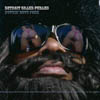 While they had a modest hit with 2000's "Sandwiches," the DGPs aren't simply a gimmick band. There is an explicit amount of humor to their songs, but for every sophomoric skit on this album, there's a nuanced instrumental track that demonstrates their musicianship. With the genre hopping sound, heavy amounts of funk, a bit of rock, and a little social commentary, they really do seem the antecedents of Parliament Funkadelic. Plus, they're also obsessed with ass.
While they had a modest hit with 2000's "Sandwiches," the DGPs aren't simply a gimmick band. There is an explicit amount of humor to their songs, but for every sophomoric skit on this album, there's a nuanced instrumental track that demonstrates their musicianship. With the genre hopping sound, heavy amounts of funk, a bit of rock, and a little social commentary, they really do seem the antecedents of Parliament Funkadelic. Plus, they're also obsessed with ass.
The opening three tracks of this album lean more towards the dancefloor/techno end of the band's sound. The sprawling "Skydive From Venus" leans more on the ambient side of ambient techno, burying the beats low in the mix and focusing on analog synth funk squelches and classic electro basslines. "Crystal" and "ChiTown Shuffle" take similar approaches, the former slathered in reverb while the latter has a genital vibrating bass thump, but both are techno with lots of processing and sound effects. The best thing is that, even these dance floor focused tracks are nuanced in their construction: sure, there’s the simple thump percussion, but the layers of synth and effects make them worthwhile off the dance floor.
Most of the tracks are tinged with it anyway, but "Rollin’ Paper & Bush" and the unlisted demo mix of "Rebal Music" are overt funk in the classic sense. Here the connection with George Clinton’s crew becomes most clear, both of the tracks mix the DGP’s standard electro/techno sound with unadulterated funk and rock that would even make Prince proud. It is in both of these that the vocals are attempts at social commentary, but here they don’t show quite the narrative proficiency of Mr. Clinton. Here it is ham-handed and overwrought…and mocking G.W. Bush started being a cliché somewhere around 2003 or 2004, but at least here the music overshadows the lyrics.
Yes, the vocals are best left to the silly songs, which straddle the line between sophomoric and absurdly brilliant. "Earth Hoes" sounds like a follow up to "Sandwiches," using the same pitch shifted vocals of that track over a stripped down minimal electro track with hints of Miami Bass ass shaking beats. "Butt Market" has a similar vibe: dirty electro synth, samples, and even a guitar solo, all with vocals discussing going to the vendor of buttocks. "Dirty ‘Ole Man" keeps the electro, but adds in cheesy Casio synth leads, operatic vocal samples, and snippets of Redd Foxx standup comedy. In short, it’s awesome.
My personal preference here is more on the electro tracks. Even though the DGP’s take a more diverse and calculated approach to dance and house music, I always love the old school synths and stiff beats. The vocal tracks are among my favorite simply because they exhibit the full range of style here, there’s electro synth, drum machine beats, absurdist lyrics, and a whole lot of funk. But with the exception of the forced social commentary and lame skits, the tracks here are great.
samples:
Read More
- Administrator
- Albums and Singles
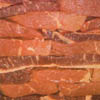 David Reed's latest as Luasa Raelon shares more with his Envenomist namesake, filled as it is with lonesome and metallic drones. In The House of Flesh there is no soul and whatever is left in its absence is a bleak and threatening specter.
David Reed's latest as Luasa Raelon shares more with his Envenomist namesake, filled as it is with lonesome and metallic drones. In The House of Flesh there is no soul and whatever is left in its absence is a bleak and threatening specter.
Snip Snip
A grotesque pile of meat adorns the cover to Luasa Raelon's latest album. This lifeless arrangement of tissue communicates perfectly the various tones and distorted synthetic sounds that populate much of The House of Flesh. Piled one on top of the other, Reed's machines generate a buzzing mass of atonal filth infused with frigid details. Glacial slabs of sound creak and grate against each other producing an air of emptiness; one would expect some substance beneath their surface, but Reed annihilates anything deeper than the superficial breeze of synthesized sine waves. The music is abrupt and clinical, sometimes sounding incomplete or sterile. This compositional approach is, at times, frustrating, but it produces genuinely desolate music of a frightening quality. Whether or not it is enjoyable is a different question, however, and I'm suspicious of Reed's intent on this record.
The album is divided into nine distinct cuts. These pieces begin and end as individual songs, but I am inclined to believe that each one was cut from the same extended and unedited work. There are pieces on the record that feature more distinct qualities than others, but none of them play host to any of the defining characteristics that typically set one song or piece apart from another. Songs like "Welcome to the House" and "These Rooms Are Alive" are distinct enough as movements but do not sound to me like whole entities in and of themselves. This amplifies the fragmented, detached nature of the album, but simultaneously disturbs its sometimes pleasant continuity. Among these dead noises there are blissful moments, but perhaps Reed aimed to avoid such pleasantries. Unexpected silences and sudden fades often end these songs, lending credence to the idea that the sequencing was designed to make an uncomfortable record all the more awkward. The House of Flesh can be listened to and appreciated, but that does not make it a pleasant or enjoyable album. It is an odd and unquiet record that squirms with a nervous and unsettling energy and obviates certain customs to which it pretends adherence. Even for Reed this is a strange and inexplicable recording.
samples:
Read More
 Part two of Boutique's extensive reissue campaign of obscure Mancunian post-punk group Spherical Objects, this disc collects the band's last two albums, released in 1980 and 1981, showcasing Steve Solamar's restless search for an artistic resolution to his inner contradictions. While the music here is reliably interesting in an anthropological sense, it doesn't always work.
Part two of Boutique's extensive reissue campaign of obscure Mancunian post-punk group Spherical Objects, this disc collects the band's last two albums, released in 1980 and 1981, showcasing Steve Solamar's restless search for an artistic resolution to his inner contradictions. While the music here is reliably interesting in an anthropological sense, it doesn't always work.
- Administrator
- Albums and Singles
 Part two of Boutique's extensive reissue campaign of obscure Mancunian post-punk group Spherical Objects, this disc collects the band's last two albums, released in 1980 and 1981, showcasing Steve Solamar's restless search for an artistic resolution to his inner contradictions. While the music here is reliably interesting in an anthropological sense, it doesn't always work.
Part two of Boutique's extensive reissue campaign of obscure Mancunian post-punk group Spherical Objects, this disc collects the band's last two albums, released in 1980 and 1981, showcasing Steve Solamar's restless search for an artistic resolution to his inner contradictions. While the music here is reliably interesting in an anthropological sense, it doesn't always work.
Further Ellipses was recorded with an entirely different personnel than the first two S.O. albums. By 1980, guitarist John Bisset-Smith quit the group to concentrate on his work in Grow Up, and the rest of the band followed suit, citing various other reasons. The first lineup of Spherical Objects had performed live only a few times, including one gig opening for Magazine, during which they were booed and spat on by an impatient audience. Perhaps it is not surprising, then, that it was so easy for the band to move on to other projects. In their place, Solamar recruited guitarist Roger Blackburn (also from Grow Up), and session players drawn from the ranks of the Manchester Musicians' Collective. (It's worth noting that the MMC was an organization that Solamar actively promoted during his time in the music business, releasing a compilation LP called A Manchester Collection on Object that showcased the work of these young artists.)
Not least because of the fact that right around the time of its release, Solamar finally made the decision to become a woman, Further Ellipses has the feel of a transitional work. As an album, it is neither here nor there, and for much of the time, the session musicians seem like they are anywhere but present as they are playing. It's hard to escape the lackluster feeling of much of the record, and even virtuoso touches like the Spanish guitar on "The Final Part" or the saxophone solo on "Regular Condition" sound terribly corny with the benefit of hindsight; competent, but poorly conceived. Even Solamar's lyrics feel a bit wedged into the melodies here, unlike the first two records, where he was rarely off his game.
Even with its obvious flaws, there are some interesting moments here, mostly because Solamar's identity crisis has reached its zenith, and the tense, self-interrogating lyrics attest to this intense emotional state. On "Regular Condition," he speaks ironically about his gender dysphoria: "Don't worry, this is a regular condition/Thousands of people have to deal with this every day." On "The Root," he sounds like a man frantically searching for a solution to an unresolvable paradox: "I wish I could get to the root of the problem." On "Don't Worry About Me," Solamar sings: "Don't worry about me, I've got my therapy/The image in my mind's eye, it just frees me." Though all of these lyrics certainly could be expressing universal emotions, it seems unavoidable to relate this to Solamar's transgenderism, and this pervasive, unconscious theme succeeds in redeeming the album, which otherwise has not aged particularly well.
No Man's Land is Solamar's swansong, and the final album released on his own Object Music imprint. By now, the transgender theme has become explicit, and tracks such as "One Way Out" cannot be read any other way: "I get confused, too much doubt/Made up my mind, just one way out." On tracks such as "Terminal Romance," Solamar unceremoniously shifts his low vocal growl into a higher, feminine quaver, striving to achieve his gender transformation vocally. The music on No Man's Land is almost completely given over to Solamar's peculiar take on the blues, with many tracks retaining a basic 12-bar structure, and containing harmonica solos. This makes for a particularly odd end product, as Solamar's unmistakable Mancunian accent and punk sneer are utterly at odds with electric blues. Additionally, transgender identity issues are not the sort of problems usually tackled by blues musicians. These strange, off-putting juxtapositions gives the entire enterprise the feel of bizarre song-poems or outsider music, even though by this time Solamar and his fellow bandmates were very much "insiders."
Knowing Solamar's biography is pretty much essential to experiencing these last two albums by Spherical Objects. Without this context, the music might strike most listeners as deserving its obscurity. With the historical context provided by Louise Alderman's great liner notes, these albums can be experienced as artistic autobiography, a unique document of an artist poised on the edge of a drastic, life-changing decision. To the extent that art can provide us with a "forgery of the unconscious," as psychoanalyst Jacques Lacan claimed, Spherical Objects represents a fascinating case study.
samples:
Read More
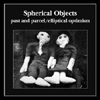 As the centerpiece of a campaign to reissue the entire discography of Manchester's short-lived Object Music, LTM's Boutique Label presents an extensive reissue of the complete works of label founder Steve Solamar's project Spherical Objects. This disc collects the band's first two albums, which evidence an idiosyncratic approach to prevailing post-punk modes, filtering glam rock, 1960s garage psych and disco through a uniquely paradoxical artistic sensibility.
As the centerpiece of a campaign to reissue the entire discography of Manchester's short-lived Object Music, LTM's Boutique Label presents an extensive reissue of the complete works of label founder Steve Solamar's project Spherical Objects. This disc collects the band's first two albums, which evidence an idiosyncratic approach to prevailing post-punk modes, filtering glam rock, 1960s garage psych and disco through a uniquely paradoxical artistic sensibility.
- Administrator
- Albums and Singles
 As the centerpiece of a campaign to reissue the entire discography of Manchester's short-lived Object Music, LTM's Boutique Label presents an extensive reissue of the complete works of label founder Steve Solamar's project Spherical Objects. This disc collects the band's first two albums, which evidence an idiosyncratic approach to prevailing post-punk modes, filtering glam rock, 1960s garage psych and disco through a uniquely paradoxical artistic sensibility.
As the centerpiece of a campaign to reissue the entire discography of Manchester's short-lived Object Music, LTM's Boutique Label presents an extensive reissue of the complete works of label founder Steve Solamar's project Spherical Objects. This disc collects the band's first two albums, which evidence an idiosyncratic approach to prevailing post-punk modes, filtering glam rock, 1960s garage psych and disco through a uniquely paradoxical artistic sensibility.
These two albums were originally released in 1978 and 1979 on Object Music, Manchester label formed by Steve Solamar in order to release records by his own band Spherical Objects. Though the label quickly branched out and released albums by other acts—Grow Up, Steve Miro and most notably, The Passage—it had effectively ceased operations by 1981, and the records quickly disappeared into obscurity. The reason for the label's dissolution is too fascinating not to relate right up front: by 1980, Solamar had decided to become a woman, and ended label operations in order to prepare himself mentally and physically for his transformation.
Knowing what eventually happened, it is impossible to listen to Spherical Objects without hearing signs and auguries of Solamar's eventual transformation. The very first track on 1978's Past and Parcel, for instance, contains the line: "Sometimes I think I should have been a woman/Sometimes it'd be a lot easier that way." On "You Can Become," Solamar sings: "You can become just what you desire." By the time of Spherical Objects' very last album No Man's Land, this theme had become explicit, as made clear in the album's title. All that aside, listening to these albums should be more than simply an occasion for trans-spotting, and happily there is much here that is compelling beyond the obvious fascination presented by Solamar's story.
Spherical Objects was, for all intents and purposes, the project of Solamar alone, who wrote all of the songs save one in the band's catalog. The band was made up of hires and session musicians who had almost no creative input. Band members would receive a sequenced cassette of Solamar playing his songs on acoustic guitar. The songs and the sequencing would remain unchanged throughout the recording process, which would occur after a few days of band rehearsal in which all arrangements were quickly worked out. This was a band working in the service of Solamar's songs and vision, a fact which is quite obvious when listening to the music, especially on these first two albums.
Past and Parcel is peculiar even by the standards of post-punk. Although it is a "rock" record at least as far as instrumentation is concerned, there is something oddly detached and tentative about these pieces. The arrangements often feel a bit slapdash or even incomplete, and Solamar's throaty, foregrounded vocals take some getting used to. After a period of adjustment, the songwriting itself is the element that asserts itself most strongly; Solamar has the talent to write good-to-great pop songs with strong hooks and memorable lyrics. His blunt, introspective lyrical style stands out, even when the arrangements fail him. The sound lies in some weird liminal zone between the pop-punk of the Buzzcocks, the mannered sound of post-punk bands such as Magazine, and musical references as varied as Brian Eno's early glam-pop records, John Cale, and especially Nuggets-era garage psych, an influence which would come to the fore on Spherical Objects' second and finest album.
Elliptical Optimism is the album on which things really come into focus for Solamar and the band. Guitarist John Bisset-Smith's abilities have seemingly improved immeasurably, and the presence of horns, synths and organs make for denser arrangements that bolster Solamar's songwriting. Though the entire album is listenable, and hardly sounds dated even now, there are a few outright winners here. The disco pastiche of "Comedians" is a highlight, as is the title track, which turns absurdist wordplay ("Tongues twisted with talking/But you're blowing your solution/Bubblegum euphemism, elliptical optimism/Don't let that bubble catch your nose") into psychedelic profundity with wobbly synth peals, wacky cartoon noises and a whole lot of delay and reverb. Elliptical Optimism is one of those albums that should be spoken of in the same breath as the rest of the post-punk critical canon along with Chairs Missing, Kilimanjaro or Entertainment!, but various factors, including its scarcity, have conspired to keep it virtually unknown.
As usual, LTM/Boutique does a great job here compiling both records along with a couple of 45s onto one disc, with copious liner notes, artwork and photographs of the band. This is meant as a companion piece to the other S.O. disc Further Ellipses / No Man's Land, released simultaneously, but the inclusion of the band's superior second album makes this collection the essential of the two. However, as with many LTM/Boutique reissues, the question is not whether these unearthed obscurities count as lost classics or essential pieces of the post-punk puzzle. Instead, the music is simply presented, in context, in order to give a bigger and more complex portrait of a musical era that has a tendency to be reduced to broad strokes, a few big names and labels, a Hollywood biopic or two. Releases like this prove that there is always more to the picture than what is revealed by chroniclers who make sweeping generalizations about an era.
samples:
Read More
- Administrator
- Albums and Singles
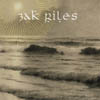 Zak Riles' solo debut on Important forgoes the rock 'n' roll of Grails for the sake of more introspective fare. Sitting at a crossroads where psychedelic meditation, classical technique, and foreign intrigue meet, Riles concocts a breathy and sultry record littered with esoteric allusions and familiar ideas.
Zak Riles' solo debut on Important forgoes the rock 'n' roll of Grails for the sake of more introspective fare. Sitting at a crossroads where psychedelic meditation, classical technique, and foreign intrigue meet, Riles concocts a breathy and sultry record littered with esoteric allusions and familiar ideas.
As a member of Grails, Riles' guitar exercises often blend the excitement of spaghetti western soundtracks with something more enigmatic. Hints of music from the Middle East and other misunderstood parts of the world illicit a sense of wonder, especially when they're used effectively by a rock band. It adds a touch of mystery and danger to the music because the imagination of the western listener is still caught up in the fanciful depictions of an exotic culture. Despite years of cultural contact, PBS specials, and Hollywood abuse, the eastern world remains mostly impenetrable. So when Riles elicits that world through references to its religious, popular, and historical music, he simultaneously conjures up an air of the unknown. This kind of aping can be found in all kinds of music and, as bands like Gang Gang Dance have proven, it can be used to hide an embarrassing lack of creativity or ingenuity. For Riles it is one effective tool among many; among the smokey oud passages and gong crashes one will find the familiar and tangible sounds of American psychedelic music and the meandering guitars of the Fahey tradition.
The record follows a distinct arc. It begins out in the open air and descends into dark and foreboding places before re-emerging into daylight at the end. "Pacific Siren" begins with the sampled sound of the beach. The music, once it starts, calls to mind the legend of Blind Joe Death and the simple, sometimes sunny songs to which his talent was attributed. Riles' guitar rambles to and fro with bright chords on this particular song, the wave-like plucking definitely recalling the sound of the ocean crashing against the beach. This music is firm and grounded to the earth and often reminds me of hot, lazy summers spent staying cool. From there the character of the record changes and punchy rhythms collide with more exotic instrumentation. Moaning violins, a harpsichord, and long, winding electric guitars pass in and out of each other and replace the familiar with something both darker and less earthly. The saz and the oud become the primary instruments during the middle portion of the record and the melodies developed therein become longer and looser. The record takes an epic tone at points, especially when Riles pulls every instrument out of the bag that he can. On "Before the Refuge" tribal drums pound away beneath electric freak-outs and violas hum over sharply curving acoustic passages that sound as though they're aching to leave the material world.
Eventually the intensity of the record reaches its peak and Riles returns to the place where he started. While "Slack Key" is a partial blend of the two styles that dominate the record, "Chloe" is nearly a complete rock 'n' roll song. With the sound of thunder interrupting the song in places, a strummed guitar and an electric solo combine to create a sensation of alleviation. The song's weightlessness dissolves into the sound of crickets and rain before the record fades out entirely. Given the album's cinematic progression, it's tempting to think of Riles' work as a cinematic accompaniment, but the record is complete unto itself and works towards its own end. That end may not necessarily be transcendent in intent, but the upwards trajectory of the album's second half does call to mind the religiously centered themes of Popul Vuh and other similar bands. The addition of American folk music to the transcendent recipe is not a new idea (Robbie Basho was thinking about this in the mid '60s), but Riles incorporates it in his own unique manner and helps to affirm its potency outside the realm of academic appreciation and nostalgia.
samples:
Read More

